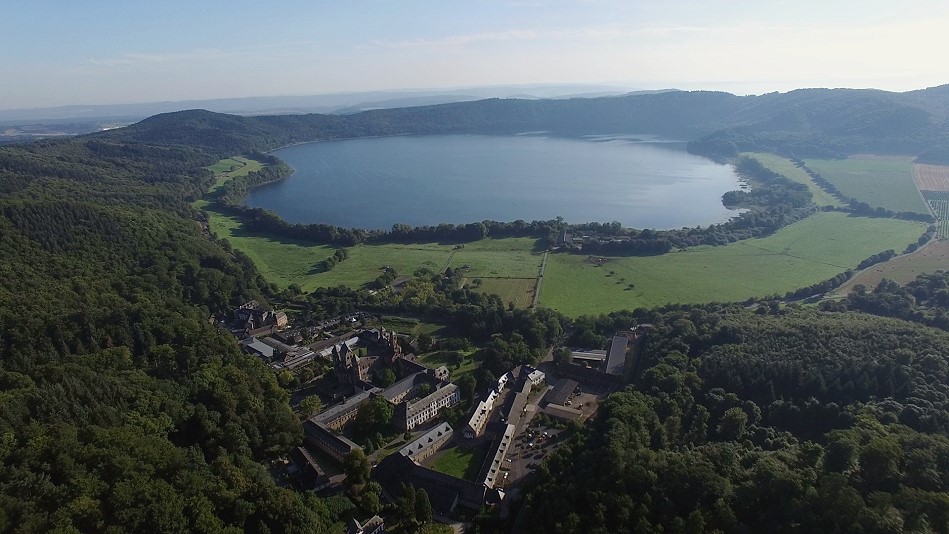New 3D Model of the Magma System Beneath the Laacher See volcano
Although the German Eifel region has seen no eruptions for over 11,000 years, it is still considered an active volcanic field. The last eruption of the Laacher See volcano occurred about 13,000 years ago, but gas emissions along the lake’s shore suggest ongoing volcanic activity. A German research team led by Hao Zhang from the GFZ German Research Centre for Geosciences in Potsdam has now produced the first high-resolution 3D image of the magma reservoir beneath Laacher See, confirming that magma is still accumulating there.
Between September 2022 and August 2023, the scientists operated more than 490 seismic stations across the Eifel. This unprecedented “Large-N” experiment recorded signals from local earthquakes, which were then processed through seismic tomography to create a three-dimensional model of the upper crust.
Their results are striking: Beneath Laacher See lies a cylindrical anomaly between two and ten kilometers deep, with an estimated volume of about 75 cubic kilometers. It shows a combination of low P-wave velocity and a high VP/VS ratio—classic indicators of partially molten rock. Interestingly, the structure tilts about 40 degrees to the southeast and intersects one of the region’s major fault zones, the Siegen Main Thrust, at around ten kilometers depth.
Clusters of microearthquakes were detected along the edges of this reservoir, pointing to high fluid pressures or elevated temperatures. The researchers also discovered a seismically active “channel” in the lower crust, which has produced recurring low-frequency volcanic earthquakes since 2013. This channel likely feeds magma and fluids upward from the upper mantle.
Although an eruption is not expected in the near future, the findings are highly relevant for volcanic hazard assessment. The reservoir is evidently replenished with fresh material over time, suggesting a higher eruption potential in the East Eifel than previously assumed.
In addition to Laacher See, the study identified smaller magmatic anomalies beneath other volcanic centers such as Rieden and Korretsberg—the latter showing increased microseismic activity in recent months. The study thus provides valuable insights into both the volcanic past and the possible future of the Eifel region.
